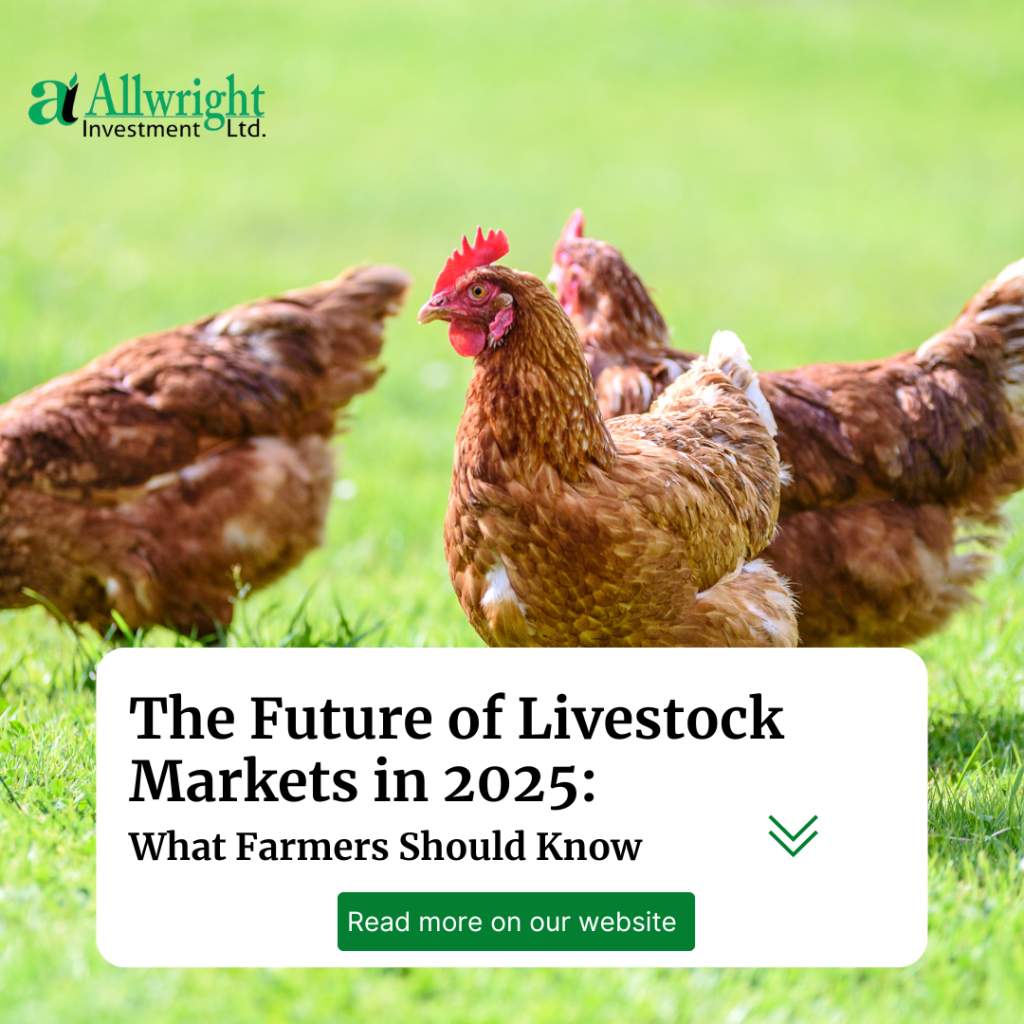
The Future of Livestock Markets in 2025: What Farmers Should Know
As we step into 2025, the livestock industry is experiencing significant shifts driven by evolving consumer demands, global economic trends, and technological advancements. For farmers, understanding these changes is crucial to staying competitive and making informed decisions. Here’s a comprehensive look at the key market trends, pricing dynamics, and consumer preferences shaping the livestock markets this year.
Trend 1: Rising Demand for Sustainable and Ethical Farming
Consumers are increasingly prioritizing sustainability and ethical practices in their purchasing decisions. Livestock products that are marketed as organic, grass-fed, or humanely raised are commanding premium prices. Farmers who adopt sustainable farming practices and transparently communicate their values stand to benefit from this growing market segment.
Trend 2: Fluctuating Feed Costs
Feed prices remain a significant factor influencing livestock profitability. In 2025, global supply chain challenges and climate variability continue to impact feed availability and costs. Farmers are advised to explore alternative feed sources, invest in feed optimization technologies, and monitor market trends closely to mitigate risks.
Trend 3: Integration of Technology in Livestock Management
Technology adoption is transforming the way livestock is raised and managed. From precision feeding systems to blockchain-based traceability, innovative solutions are enhancing productivity, reducing waste, and building consumer trust. Farmers who embrace these technologies can position themselves as leaders in a tech-savvy market.
Trend 4: Increased Focus on Export Markets
Global trade in livestock and livestock products is expected to grow in 2025, driven by rising demand in developing economies. Farmers should stay informed about export regulations, quality standards, and opportunities in international markets to expand their revenue streams.
Pricing Dynamics: What to Expect
1. Volatility in Meat Prices
Meat prices are anticipated to remain volatile due to factors such as changing consumer preferences, supply chain disruptions, and regulatory policies. Farmers should diversify their product offerings and consider value-added products to cushion against price fluctuations.
2. Premium for Specialty Products
Livestock raised under specific conditions—such as organic certification or grass-fed labeling—continues to fetch higher prices. Investing in certifications and niche markets can provide a competitive edge and attract a loyal customer base.
3. Regional Variations
Pricing will vary significantly based on region, with local demand and supply conditions playing a critical role. Farmers should consider regional market analysis when planning production and distribution.
Consumer Preferences in 2025
1. Health and Wellness
Post-pandemic, consumers remain focused on health, driving demand for leaner cuts of meat and products with verified health benefits. Farmers can respond by producing healthier livestock options and emphasizing nutritional value in their marketing.
2. Convenience
Busy lifestyles are increasing the demand for ready-to-cook or pre-packaged livestock products. Collaborating with processors to offer convenient options can open new revenue channels.
3. Transparency and Traceability
Consumers want to know where their food comes from and how it’s produced. Utilizing blockchain or similar technologies to provide end-to-end traceability can build trust and strengthen brand loyalty.
Strategies for Success in 2025
- Adopt Sustainability Practices: Embrace eco-friendly methods to align with consumer values and market demands.
- Leverage Technology: Invest in tools and platforms that improve efficiency and offer detailed insights into livestock health and production.
- Stay Informed: Regularly monitor market trends, pricing, and regulatory updates to adapt strategies accordingly.
- Diversify Offerings: Explore niche markets, value-added products, and export opportunities to reduce dependency on a single revenue source.
- Build Relationships: Strengthen connections with buyers, processors, and industry organizations to stay ahead of market shifts.
Conclusion
The livestock markets in 2025 present both challenges and opportunities for farmers. By understanding the trends, adapting to consumer demands, and leveraging technology, farmers can not only navigate this dynamic landscape but thrive in it. With the right strategies, 2025 can be a year of growth, innovation, and success for livestock farmers worldwide.
Don’t forget to reach out to us if you would like to partner with us.

Leave a comment
You must be logged in to post a comment.